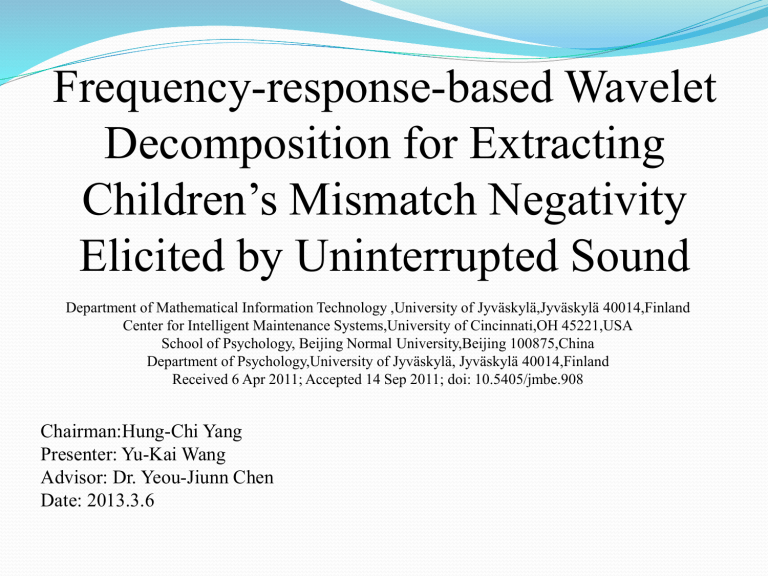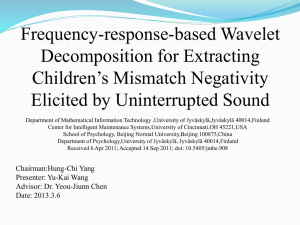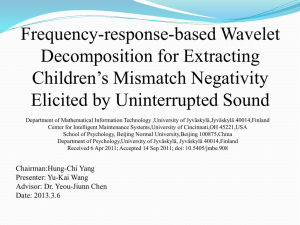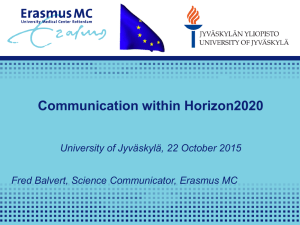Frequency-response-based Wavelet Decomposition for Extracting Children’s Mismatch Negativity Elicited by Uninterrupted Sound

Frequency-response-based Wavelet
Decomposition for Extracting
Children’s Mismatch Negativity
Elicited by Uninterrupted Sound
Department of Mathematical Information Technology ,University of Jyväskylä,Jyväskylä 40014,Finland
Center for Intelligent Maintenance Systems,University of Cincinnati,OH 45221,USA
School of Psychology, Beijing Normal University,Beijing 100875,China
Department of Psychology,University of Jyväskylä, Jyväskylä 40014,Finland
Received 6 Apr 2011; Accepted 14 Sep 2011; doi: 10.5405/jmbe.908
Chairman:Hung-Chi Yang
Presenter: Yu-Kai Wang
Advisor: Dr. Yeou-Jiunn Chen
Date: 2013.3.6
Outline
Introduction
Purposes
Materials and Methods
Results
Conclusions
Material and Methods
2.4.2 Selection of wavelet and number of levels for reconstruction
The procedure includes four steps:
1)The unit impulse is decomposed into a few levels by a wavelet
2)Each level is used for the reconstruction
3)The Fourier transform of the reconstructed signal is performed
To obtain the frequency responses at each level
4) The appropriate wavelet and proper levels for the reconstruction of the desired signal
Material and Methods
As indicated in Table 1
The frequency ranges for ‘
D5
’ and ‘
D6
’ best matched the optimal frequency range of MMN
Hence, the coefficients for ‘
D5
’ and ‘
D6
’ should be chosen for reconstructing the desired MMN
Material and Methods
The bandwidth at each level is shown in Table 1.
optimal



